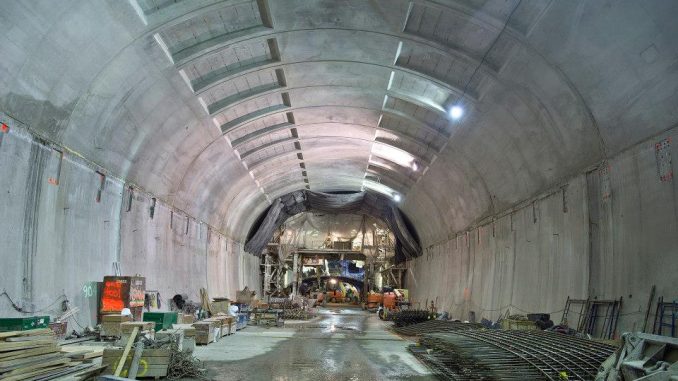
This year marked the 100th Anniversary of promised construction of the Second Avenue Subway. All we have is the first phase with three stations running from 63rd to 96th Street opened in January 2016 at a cost of $4.5 billion. In April 2019, then MTA Office of Capital Construction President Janno Lieber claimed that the MTA could save between $500 million to a $1 billion in costs for the proposed Second Avenue Subway Phase 2. This would have reduced the overall tab down to almost $5 billion. Promised cost savings were based upon reduction in excavation for the 125th Street Station and building the 116th Street Station in space no longer needed for other project work. Instead the cost has grown to $6.9 billion.
Under the $51 billion 2020-24 Five-Year Capital Plan, the cost increased by $1 billion. The previous federal share of $2 billion or 33 percent has now been assumed to be 50 percent or $3.4 billion. There is no guarantee that the final cost might end up billions more. This is based upon future advancement of design and engineering, construction contractors responses to the procurement process for contract(s) award followed by change orders during construction due to unforeseen site conditions or last minute changes in scope.
A legal Federal Transit Administration Capital Investment New Starts Full Funding Grant Agreement (FFGA) to fund the Second Ave Subway Phase 2 would cap federal participation at $3.4 billion. This still remains an open question. The MTA would be legally responsible to pay for any cost increases above $6.9 billion.
All the FTA has provided to the MTA is permission to advance final design and engineering. The project still faces myriad hurdles. It will cost more than $200 million per block to advance the Second Avenue subway from 96th to 125th Street. Is this a sound investment for commuters and taxpayers? Fully funding the $51 billion MTA 2020-24 Five-Year Capital Plan is dependent upon receipt of $15 billion generated by Congestion Toll Pricing. There is no guarantee that this will be implemented until January 2024, which would be four years later than previously assumed. The most critical issue to be resolved is identifying and securing the $3.5 billion local share toward the total project cost. It is a basic legal requirement. This is needed to leverage future FTA capital funding under an approved FFGA to support advancement of the project. The MTA must also demonstrate that they have the financial capacity to pay for any unanticipated cost increases or funding shortfalls. How do they do this when we just learned that the agency now faces a multi-year, multi-billion dollar financial shortfall?
Final design and engineering is underway, but far from complete. More time is still needed for completion of all business relocation, real estate acquisition and private property easement rights. Agreements with New York City and various owners of underground utilities including water, sewer, gas, electric, steam and cable need to be finalized before being ready to commence construction. It is anybody’s guess how long it will take the MTA to successfully resolve all of the above. This will not be a shovel-ready project tor federal funding until these critical tasks are done. This is necessary to convince the FTA to approve a Capital Investment Grant New Starts FFGA for financing. At the current rate of project progress, the FFGA may not be approved for another year or more.
It is a fair question to ask if spending $3.4 billion in MTA local funding for the purchase of hundreds of new buses and subway cars, upgrading out-of-date signal systems on several lines increasing the number of subway stations to be ADA-accessible and securing the subway system from future Super Storm Sandys are better investments of financial resources than advancing the Second Avenue subway. Reaching a state of good repair accompanied by safe and reliable service would benefit far more riders. It should be a higher priority than system expansion.
Larry Penner is a transportation advocate, historian and writer, who previously worked for the Federal Transit Administration Region 2 New York Office. This included the development, review, approval and oversight for billions in capital projects and programs for the MTA, NYC Transit, Long Island Rail Road, Metro North Rail Road, MTA Bus along with 30 other transit agencies in NY & NJ.

